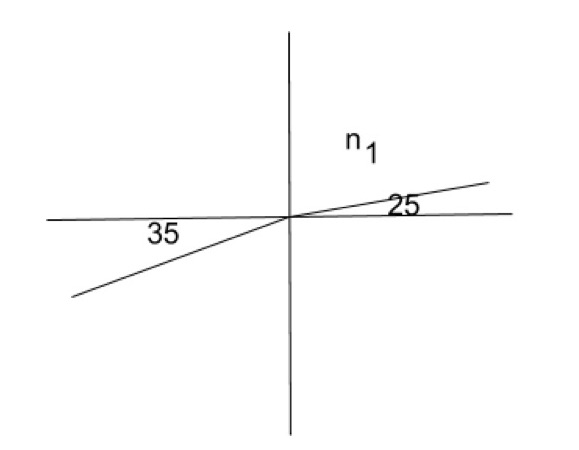All SAT II Physics Resources
Example Questions
Example Question #31 : Sat Subject Test In Physics
A train blows its whistle as it approaches a station at 

Wave frequency is distorted when the observer or source is in motion based on the Doppler effect. The equation for the Doppler effect is:
Terms in the numerator are summed if the observer moves toward the source. Terms in the denominator are summed if the source is moving away from the observer.
In this question, the train (source) is moving toward the observer. This means that the denominator terms will be subtracted. The velocity of the observer is zero, giving us our final equation:
Use the given values for the emitted frequency, velocity of the train, and speed of sound to solve this equation.
Example Question #1 : Optics, Waves, And Quantum
A dog is stationary in someone's front yard and barks at a frequency of 

The observer is moving towards the dog
Both the dog and the observer have the same velocity
The observer is traveling in circular path with the dog at the center of the circle
Both the dog and the observer have the same acceleration
The observer is moving away from the dog
The observer is moving towards the dog
The doppler effect states that the observed frequency depends on the frequency produced, and the relative velocities of the observer and sound source:
To increase the observed frequency the sound source and the observer must be moving towards each other. Since the dog is stationary, therefore the observer must be moving towards the dog.
Example Question #1 : Optics, Waves, And Quantum

Light passes from a medium with some index of refraction 

Snell's law states:
If we substitute the values from the question we get:
Next rearrange to isolate
Example Question #1 : Polarization
Which of the following scenarios would result in the polarization of light?
Light passes through a vacuum
Light is absorbed by a black body
Light is reflected off of a glass window
Light pass between two mediums with the same index of refraction
A light source travels at a high velocity
Light is reflected off of a glass window
Light is polarized when it is all oscillating in the same direction. This effect occurs when light is reflected. Polarization can occur through refraction, however if light is passing between mediums with the same index of refraction, the light will not refract.
Example Question #31 : Sat Subject Test In Physics
Of the following, which type of waves has the longest wavelength?
Orange light
Microwaves
Green light
X-rays
Gamma rays
Microwaves
Wavelength and frequency have an inverse relationship; as one value increases, the other value decreases. In contrast, frequency and wave energy have a direct relationship; as one term increases, the other increases as well.
In the electromagnetic spectrum all wave types have the same velocity, but some have greater energy (and frequency) than others. Gamma rays have the highest energy, while radio waves have the lowest. In order from lowest energy to highest, the types of electromagnetic waves are radio waves, microwaves, infrared light, visible light, ultraviolet light, X-rays, and gamma rays.
Of the given answer options, microwaves have the lowest energy. This means they will also have the lowest frequency, and largest wavelength.
Example Question #31 : Sat Subject Test In Physics
Which material would be sufficient to stop most gamma radiation?
Skin
An aluminum plate
A sheet of paper
Plastic goggles
Several centimeters of lead
Several centimeters of lead
Gamma radiation is high energy electromagnetic waves, and require a dense material such as lead to be blocked. 1 centimeter of lead reduces gamma radiation by 50%. Gamma rays easily pass through the other materials.
Certified Tutor
All SAT II Physics Resources

























